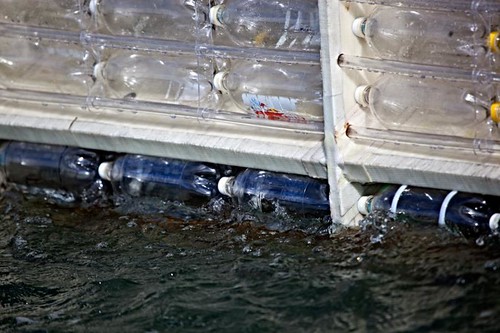The folks you see out on their boats on the bay are not the only ones fishing; those who came before them still get a slice of the action, as this recent article about the retrieval of "ghost gear" from the Chesapeake Bay illustrates. In many trap-based fishing industries, like lobsters and crabs, a significant number of traps are lost during the course of regular fishing efforts. In addition, when a fishery turns bad, as happened in the Long Island Sound lobster fishery in 1999, some fishers cut their losses, and their marker floats, quit the fishery and just leave their gear where it is on the bottom of the bay.

The problem is, ghost gear like this keeps on fishing, long after the fisher has moved on to other endeavours. The design of the trap continues to attract animals, even without bait, because the trap is basically a refuge or cave. Those that enter are unable to leave and as they die they may act as bait to attract yet more animals to feed on their body. In this way, the trap becomes a sort of "biomass black hole", sucking in animals from all around, for as long as the trap holds together. Nets can ghost fish too, especially gillnets or any kind of trawl that can trap fish or strangle a reef
We used to trawl up ghost lobster gear all the time when I was working in Long Island Sound. Indeed, few days on the water went by without snagging someone's old gear at some point, which speaks to the density of gear that's out there in some inshore waters. I'm glad the fishers and the resource management agencies are working together to address the problem, because its one of those awful chronic out-of-sight, out-of-mind issues that can erode a fishery despite everyone's best efforts to manage things properly. If you find ghost gear, call your local DEP or DEC, even the EPA, and let them know so they can come and retrieve it.
Picture of ghost gear on a coral reef from NOAA
 Sunday, April 11, 2010 at 10:00AM
Sunday, April 11, 2010 at 10:00AM 



